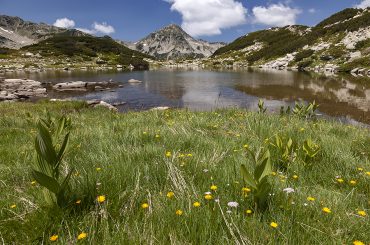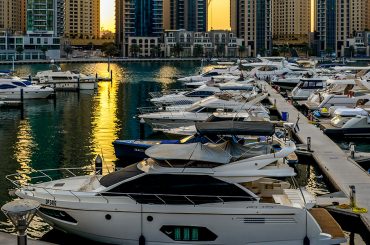Everyone in Bansko has a story of fortune made or lost, of endings or beginnings. Whether that’s beleaguered shepherds whose land at the foot of the mountain made them millionaires overnight, British pensioners and dreamers who lost money on property by the barrelfuls, entrepreneurs who made Bansko a home and playground for their ideas, or now digital nomads who found a new destination – Bansko has played host to ideas, dreams, and despair for 20 years.
But everyone agrees on one thing: the small alpine town of 9,000 inhabitants has a perennial allure. You can see it in the quaint, stone or pebble houses in the old part town. Or in the friendliness of the people, the slow pace of life, the alpine climate. And you can especially find it in the Pirin Mountains that rise majestically above the town, described as having “exceptional beauty” by UNESCO, which inscribed the mountains as a World Heritage Site.

“People fall in love with this place,” told me Mark Harrod, a Briton who, together with his partner, owns a co-working space called Altspace Coworking.

Harrod was talking about digital nomads, the latest demographic to discover Bansko. He added: “We have been seeing people come for 2 weeks, stay for two months, and then start talking of moving here full-time,”
And as 550 digital nomads descended on Bansko this week for the third edition of the Bansko Nomad Fest – a weeklong celebration of the location independence lifestyle – the question now firmly posits itself: will Bansko’s emergence on the circuit of digital nomads, and base for remote workers, signify a resurrection or resurgence for the town whose property market went bust in 2009?

For Harrod and his partner, Becky Bottjer, that resurgence enticed them to move to Bansko at the beginning of 2018 after more than a decade of vacillating or dilly-dallying between Bansko and the UK.
Harrod had originally bought a flat during the boom years. Then he sold it 10 years ago and instead took to visiting twice yearly.
“Year after year we were seeing improvements in infrastructure and telecommunications, and coming twice a year started feeling like home,” Harrod explained. “We both worked in IT, we started seeing remote workers coming here, and thought it would be a cool place to live in.”
A year after moving they bought the place that is now Altspace Coworking, which opened its doors 2 years ago.

They have since opened a second coworking space, and it joins about half a dozen coworking spaces.
That number is significant: the entrepreneur and digital nomadism thought leader Andreas Wil Gerdes believes that Bansko now has more coworking spaces per capita than anywhere else in the world.
It all started – at least the organised aspect of digital nomadism in Bankso did – in 2016 when Matthias Zeitler and Uwe Allgäuer opened the first coworking space, called Coworking Bansko. Digital nomadism at first grew slowly, then it picked up pace in parallel with Coworking Bansko’s annual nomad fest, which has given the town greater visibility. Over 100 digital nomads attended the first Bansko Nomad Fest in 2020, a number that climbed to around 250 last year, and leapt again to 550 this year.
Several months ago Zeitler announced another first for Bansko: Coliving Bansko, a block of 43 flats with an entire floor of facilities geared for digital nomads – a lounge area for working and socializing (including quieter sections), presentation room, multipurpose room, gym, bar and bistro, a common kitchen and courtyard.

Nomads and property market
Cristian Zarnescu of Plus Property, a real estate agency, told this website that digital nomads are increasingly buying property. He said that property prices are up around 15 percent year on year, and that currently Bulgarians buy 60 percent of property, followed by nomads as well as a range of buyers from eastern Europe.
“People who have good properties are now holding on to them, so finding good deals has become hard,” Zarnescu said. “It’s actually a good problem to have.”
Zarnescu’s reference to good property excludes blocks of flats that have remained in the doldrums for a variety of reasons.
Zarnescu, a Romanian, used to live in London before moving to Bansko in 2007, arriving in the midst of a property boom and a town that felt like a construction site. The town tripled or quadrupled in size over several years.
The building boom was triggered by the expansion of ski runs and Bulgaria’s entry into the EU. At the turn of the century, Bansko had been a village of 800 houses and two ski runs. The expansion of ski runs spurred a rush to build new hotels and aparthotels.
Demand from British buyers, followed by Russians, further fuelled the property rush. At its peak in 2007, prices of flats doubled to around €1,400 per square metre within a year, in some instances rising to €2,000 per square metre by early 2008.
Then the market crashed, partly or mostly due to financial crisis of 2008, and prices slid to around €390 per square metre in subsequent years.

It was only in 2018 that prices began rising again, and for the past 4 years prices have risen by around 10 percent every year according to various accounts. The price has now reached the level it was at the beginning of 2007, of €600-plus per square metre.
Property affordability – whether buying or renting – are one of the elements that has made Bansko attractive to digital nomads. Since nomads tend to earn less than if they had stayed on a traditional career trajectory, they seek places where a good quality of life can be had at a lesser cost of living – something that now even has a name: geoarbitrage.
And Bansko has a competitive edge in this sense because there are not many places, particularly in Europe, where you can buy a one-bedroom flat for less than €40,000, or rent for around €250 monthly.
It’s such scenario that has given Bansko its serendipitous moment: a location for digital nomads that might not have happened had it not been the property crash of 14 years ago.
The mountains and nomads
Aside from geoarbitrage, nomads also look for virtual and physical connectivity, a nomad scene or community, as well as nature and outdoor activities in a destination. Bansko now offers all of these things.

The Pirin Mountains, which rise majestically on the southern fringes of Bansko, have 114 peaks that rise above 2,500 metres as well as many glacial lakes.
Around 400 square kilometres of the mountains were designated a UNESCO World Heritage Site in 1983 thanks to their “exceptional beauty”, as well as endemic and relict species – Pirin, for example, holds one third of Bulgaria’s plant species even though it covers just a fraction of Bulgaria’s land area.
Iconic species in the mountains include brown bears, chamois, brown wolves, two species of deer, and even golden eagles.
UNESCO said that “the ability to experience remoteness and naturalness is an important attribute of the Outstanding Universal Value” of Pirin Mountains.
That is something that is also valued by digital nomads, who are now becoming a counterweight to Bansko’s seasonal tourist economy, which peaks in the four-month-long skiing season.
Attempts to attract tourists in the rest of the year have been stepped up in recent years – in tourism marketing, Bansko is now pitched as an ‘All Season Resort’.
Trekking visitors have been growing in summers – there are 20 marked trekking routes of varying lengths and difficulty in the mountains – although other non-winter outdoor activities such as rock climbing, nature retreats, spa and wellness, and wildlife watching remain in their infancy.

The arrival of digital nomads has now given business circles in Bansko a new prospect: a couple of thousand nomads or remote workers present at any one time throughout the year would make an economic contribution equal to that of several tens of thousands of short-term tourists.
Such hope or talk has been inspired by recent growth in influx of nomads, which has been greater than anyone anticipated just a few years ago. And with Bansko now starting to be mentioned as one of Europe’s top destinations for nomads – and especially its emergence among the more mature remote workers – such hope has become a realistic prospect.
Contribute to Analyses & Insight
Robustly researched and professionally delivered analyses and insight features on this website take much time, effort, and resources to produce. Victor Paul Borg relies on donations for income and to fund this website. This website's donation setup itself is uniquely transparent, with targeted amounts – of just €50 every month for analyses – that allow tracking of donations in real time on the page. Contribute as little as €5.




